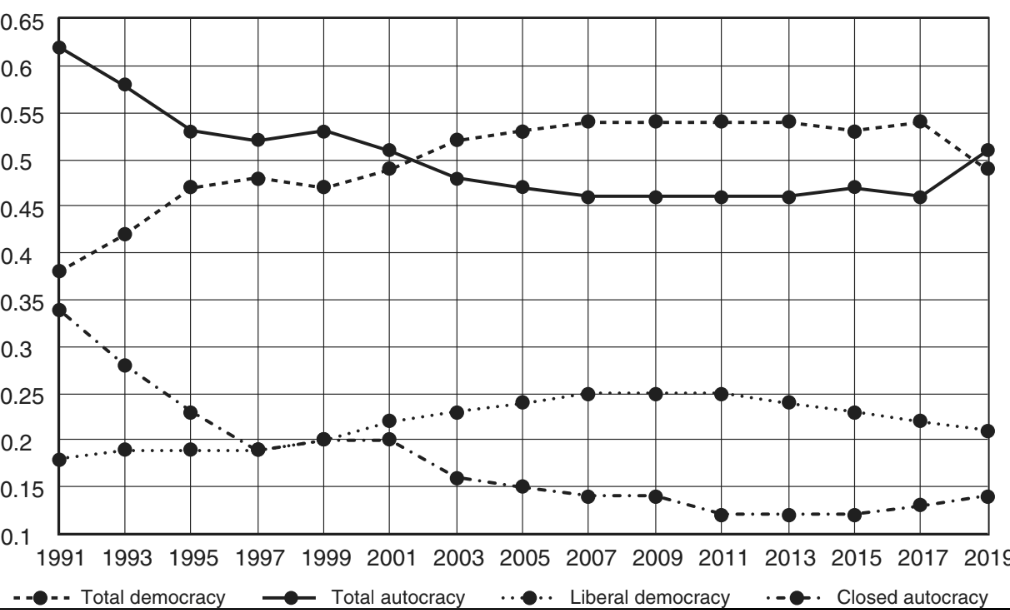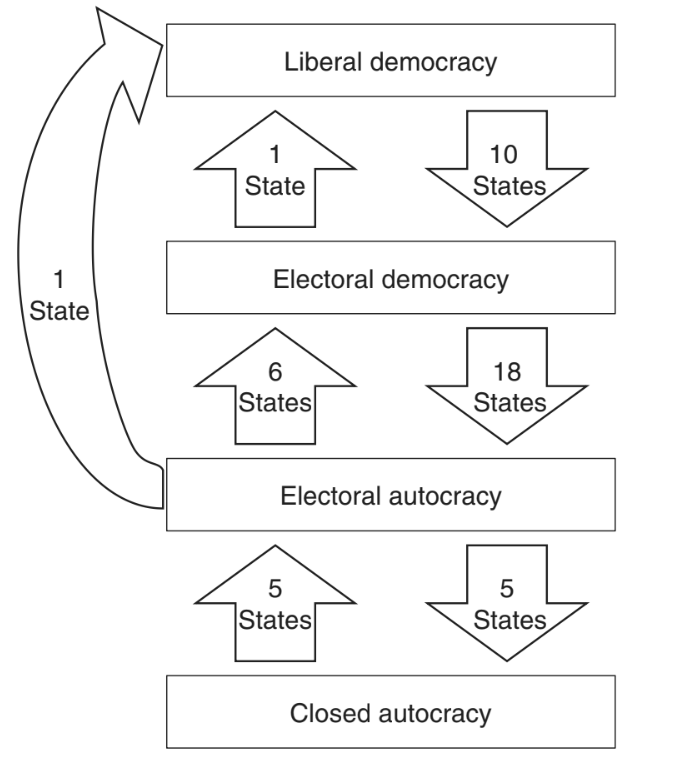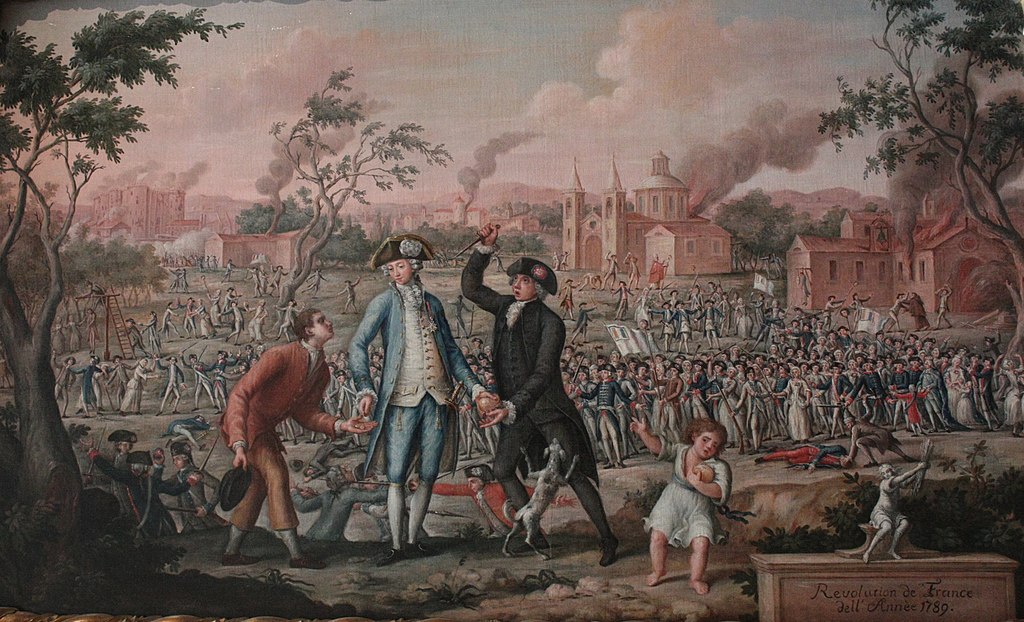Democratic decay: Autocracies have been on the rise since 2017

- There was a strong trend of democratization during the Cold War and in the years that immediately followed.
- For more than a decade, Francis Fukuyama’s optimistic prediction that all states would become democracies appeared to be prophetic. Unfortunately, the trend has sharply reversed, and we have witnessed substantial autocratization over the past decade.
- Hundreds of millions of people around the world are living in countries where the space for individual freedom is steadily shrinking.
Excerpted from Tyrants on Twitter: Protecting Democracies from Information Warfare, by David L. Sloss, published by Stanford University Press, ©2022 by the Board of Trustees of the Leland Stanford Junior University. All Rights Reserved.
For many years, political scientists have debated about how best to classify countries into “regime types.” One very helpful classification system — the “regimes of the world,” or RoW system — divides countries into four groups: liberal democracies, electoral democracies, electoral autocracies, and closed autocracies. “In closed autocracies, the chief executive is either not subjected to elections or there is no meaningful, de-facto competition in elections.” In contrast, “electoral autocracies hold de-facto multiparty elections . . . but they fall short of democratic standards due to significant irregularities, limitations on party competition or other violations of . . . institutional requisites for democracies.” Electoral democracies are countries that not only “hold de-facto free and fair multiparty elections, but also . . . achieve a sufficient level of institutional guarantees of democracy such as freedom of association, suffrage, clean elections, an elected executive, and freedom of expression.” Finally, under the RoW system, “a liberal democracy is, in addition, characterized by its having effective legislative and judicial oversight of the executive as well as protection of individual liberties and the rule of law.”
Classification of countries in accordance with the RoW system is codified in the Varieties of Democracy (V-Dem) database with the “v2x_regime” variable. The data in table 1 is derived from the V-Dem database. Table 1 shows that there was a strong trend of democratization during the Cold War, especially between 1980 and 1990. Between 1960 and 1990, the percentage of countries in the world that qualified as democracies (including both liberal and electoral democracies) increased from 19 to 34 percent, while the percentage of autocracies (including both closed and electoral autocracies) decreased from 81 to 66 percent. During the same period, the percentage of liberal democracies increased from 10 to 17 percent, while the percentage of closed autocracies decreased from 52 to 36 percent. In short, during the Cold War, democracy was on the rise and autocracy was in decline.

These trends accelerated during the early years of the post-Cold War period. As illustrated in figure 1, the percentage of democracies in the world increased from 38 percent in 1991 to 54 percent in 2007, while the percentage of autocracies decreased from 62 percent in 1991 to 46 percent in 2007. Similarly, the percentage of liberal democracies increased from 18 percent in 1991 to 25 percent in 2007, and the percentage of closed autocracies declined from 34 percent in 1991 to just 12 percent in 2011. For more than a decade, Francis Fukuyama’s optimistic prediction that all states would become democracies appeared to be prophetic.
Unfortunately, we have witnessed a trend of increasing autocratization over the past decade. As shown in figure 1, the percentage of liberal democracies has been declining since 2011 and the percentage of closed autocracies has been growing since 2015. The total percentage of democracies in the world dropped sharply between 2017 and 2019, while the percentage of autocracies registered a sharp increase during that period.

Figure 2 depicts the number of states that shifted between categories in the period from 2010 to 2019. Overall, 33 states experienced democratic decay during this period, including 10 states that dropped from liberal to electoral democracies, 18 states that dropped from electoral democracies to electoral autocracies, and 5 states that dropped from electoral to closed autocracies. During the same period, only 13 states registered democratic, including 5 states that improved from closed to electoral autocracies, 6 states that improved from electoral autocracies to electoral democracies, 1 state (Barbados) that improved from an electoral to a liberal democracy, and 1 state (Tunisia) that was transformed from an electoral autocracy to a liberal democracy.
Hungary, India, Philippines, Poland, South Africa, and Turkey — to name some of the most prominent examples — all experienced significant democratic decay in the past decade. Hungary, under the leadership of Viktor Orbán, is now firmly in the authoritarian camp, as are Turkey under Recep Tayyip Erdoğan and the Philippines under Rodrigo Duterte. In its most recent report, published in 2021, V-Dem downgraded India from an electoral democracy to an electoral autocracy. Brazil, under Jair Bolsonaro, is moving dangerously in that direction. The quality of democratic governance has degraded significantly in numerous other countries as well.
The stakes in the geopolitical competition between autocracy and democracy are exceptionally high. This is not a contest about which country can claim the title of the most powerful nation in the world. The fundamental question is whether the citizens of Brazil, Hungary, India, and dozens of other states will have the opportunity to participate in democratic governments that respect individual freedom. The phenomenon of democratic decay means that hundreds of millions of people around the world are living in countries where the political space available for individual freedom is steadily shrinking, and governments are committing ever more egregious violations of fundamental human rights.





